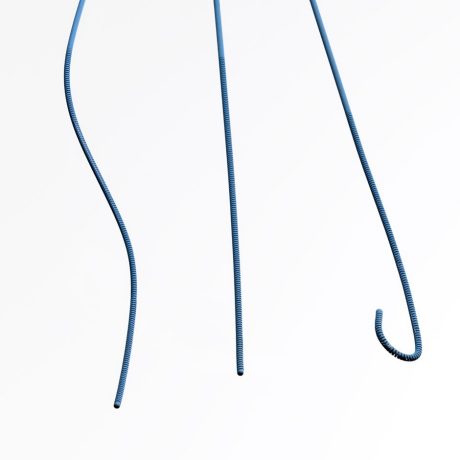Warning
Contents supplied STERILE using an ethylene oxide (EO) process. Do not use if sterile barrier is damaged. If damage is found, call your Boston Scientific representative.
For single use only. Do not reuse, reprocess or resterilize. Reuse, reprocessing or resterilization may compromise the structural integrity of the device and/or lead to device failure which, in turn, may result in patient injury, illness or death. Reuse, reprocessing or resterilization may also create a risk of contamination of the device and/or cause patient infection or cross-infection, including, but not limited to, the transmission of infectious disease(s) from one patient to another. Contamination of the device may lead to injury, illness or death of the patient.
After use, dispose of product and packaging in accordance with hospital, administrative and/or local government policy.
Intended Use/Indications for Use
Urological Guidewires are intended to facilitate the placement of endourological instruments during diagnostic or interventional procedures. These guidewires are not intended for coronary artery, vascular or neurological use.
Precautions
• Do not use this product without reading and understanding the complete instructions enclosed herein.
• The entire operation should be carried out in a sterile field.
• Product is sterile in an unopened and undamaged unit package. Do not use if the unit package or the guidewire is broken, damaged or soiled. Return any defective product to Boston Scientific. All guidewires should be disposed of safely and properly after use, following local regulations for medical waste management.
• When using a drug or a device concurrently with a wire, the operator should have a full understanding of the properties/ characteristics of the drug or device so as to avoid damage to the wire.
• For hydrophilic wires only, the surface of the guidewire is not lubricious unless it is wet. Before taking it out of its holder and inserting it through a catheter, fill the holder and the catheter with physiological saline solution.
• The guidewire should be advanced through the scope using short, deliberate 2-3 cm movements to prevent inadvertent damage to the device or patient.
• When reinserting the guidewire back into the holder, take care not to damage the wire’s coating with the edge of the holder.
• Do not use a metal torque device with the guidewire. Use of a metal torque device may result in damage to the wire. Also do not slip a tightened up torque device over the wire, as this may result in damage to the wire.
• Due to variations of certain catheter tip inner diameters, abrasion of the hydrophilic coating may occur during manipulation. If any resistance is felt during introduction of the catheter, it is advisable to stop using such catheters.
• After removal from the patient’s urinary system, and prior to reinserting it into the same patient during the same catheterization, hydrophilic guidewires should be rinsed in a bowl full of physiological saline solution. Use of alcohol, antiseptic solutions or other solvents must be avoided because they may adversely affect the surface of the guidewire.

